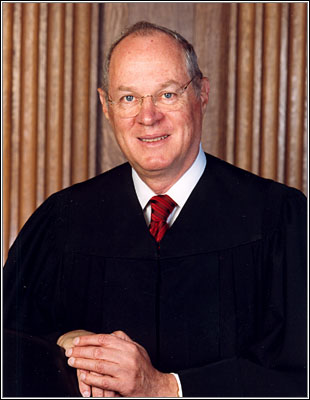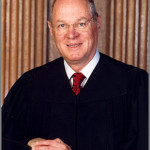THERE ARE NO NEW IDEAS. PART 3
Part 3 of a 3-Part Series. Click here for Part 1 and here for part 2.
Some philosophers, scientists and artists, such as Micah Malone, suggest that there are going to be New Ideas in spite of the philosophical evidence that suggests the contrary: New ways of looking at things, New modes by which to do things, and New combinations of old ideas. Malone said this regarding the iPod in our Facebook discussion about the New:
While there were already several Mp3 players on the market when [Apple’s] iPod came out, none of them looked quite like the iPod, nor did they have the ease and fluid design of it, nor did any of them inspire consumption! But also, the iPod was released at the perfect time in the market... I don't think it was predetermined, nor in existence before that. It was just the right product packaged with the right ideas, which were new! just born from existent parts.
Firstly, I must take issue with the idea that the iPod’s design inspired consumption. According to the SEC, Apple spent about $1.3 Billion on advertising in their last three fiscal years, an amount of cash that could undeniably sell a lot of ice to a lot of Inuit people, or so the saying goes. One can create a much greater sense of need with $1.3B worth of marketing than an inanimate, though shiny and white, object will ever be able to. The iPod’s ostensibly innovative features have been embedded into our psyches as The New, but they are only a combination of preexisting technologies, as in all inventions, that were founded upon countless ideas that preceded the iPod.
Now, it’s true; the rotational control1 (“scroll wheel”) of the iPod’s user interface is patented and therefore its ‘Newness’ is actually sanctioned by the U.S. Constitution. However, the application that manages an IPod’s playlists and enables users to actually make use of the scroll wheel to access songs is not patented by Apple. A man by the name of John Platt beat Apple to the patent by five months.2
The patent, as a governmental endorsement of newness in an idea (and in accordance with The New) holds mythical status even in the definition-contingent (though notoriously vague) world of lawyers and laws. U.S. Judge and legal philosopher Learned Hand wrote in his 1950 decision for a patent ruling “[T]he question [of]whether there is a patentable invention… is as fugitive, impalpable, wayward, and vague a phantom as exists in the whole paraphernalia of legal concepts. (…) If there be an issue more troublesome, or more apt for litigation than this, we are not aware of it.” (Harries v. Air King Prod. Co., 183 F.2d 158, 162 (2d Cir. 1950)).
In the spring of 2007, the U.S. Supreme Court shaped a new precedent for the matter of “obviousness”3 as it pertains to patents in the unanimously decided KSR v. Teleflex ruling. To be granted a patent, an invention must have a non-obvious improvement over a previous invention. The first time the court weighed in on a definition for obviousness was Hotchkiss v. Greenwood (52 U.S. 11 How. 248 248 (1850)) when the nine justices had to decide whether manufacturing doorknobs out of clay or porcelain, rather than metal, was a patentable invention and they didn’t rule in favor of the clay and porcelain because the “innovation” of making an existing product out of a new material was “obvious.” In KSR, and several rulings in the 150-year evolution of the court since Hotchkiss, the “obviousness test” became much stricter. Justice Anthony Kennedy wrote, “Courts… have been upholding patents for technologies or designs that didn’t need them, that would have been developed ‘in the ordinary course’ of events.”4 Kennedy’s statement that nothing can be new unless it happens outside of the “ordinary course” of events, narrows down the possibility of anything New ever occurring at any point in time considerably. If taken to its literal extreme, Kennedy’s idea implies Newness is an impossibility. In KSR, the Supreme Court effectively made patents harder to obtain and defend. It’s as if the justices know, deep down, that there are no new ideas. There are no intellects that I respect more for their sheer depth and fecundity than Supreme Court Justices, so if you’re like me, you probably get the feeling that we can safely start to rethink concepts such as Avant Garde.
[1] Remember the Atari(tm) game Pong and the rotational control module you would use to move a paddle left or right on a television screen? Apple’s scroll wheel is hardly a new idea in terms user interface.
[2] Jade , Kasper and Katie Marsal. “Apple Fails to Patent iPod Interface.” AppleInsider. 9 August 2005. http://www.appleinsider.com/articles/05/08/09/apple_fails_to_patent_ipod_interface.html
[3] I think we can all agree that New Ideas cannot be obvious. Otherwise they would not be new.
[4] Bennett, Drake. “Patently Obvious.” The Boston Globe. 6 May 2007. http://www.boston.com/news/globe/ideas/articles/2007/05/06/patently_obvious/
The Old Brand New, an ongoing lecture series in the Netherlands regarding New ideas in art. The artist Kristen Reynolds brought this to my attention after we published Part 1.
- Justice Anthony Kennedy.
- Image from Appraisal News Online, via Google Image Search.





